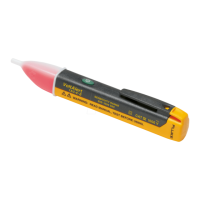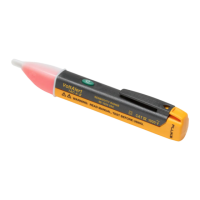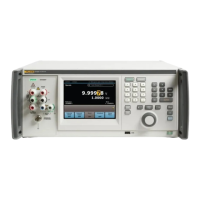5700A/5720A Series II
Operators Manual
4-46
4-49. Programming a Scale Factor
You can use the S key in ac and dc voltage and current functions to apply a scale
factor to subsequent outputs. After you establish a scale factor, the correct proportion of
it is applied to all subsequent entries to compensate for a UUT's scale error. You turn off
this scale factor by pressing
S again. Both the scale error and the keypad-entered value
are shown on the Control Display. The Output Display shows the true output value.
The
S key may be used to establish a reference full-scale endpoint, which you can use
with
o to check the linearity of a UUT. (See the example under “Linearity Checking
Using Offset and Scale”.)
To program a scale factor, proceed as follows:
1.
Set the calibrator to output a level just below the UUT full-scale endpoint. For
example, you might use 19.9V for a UUT that ranges at 20V.
2.
Adjust the calibrator’s output with the rotary knob (and arrow keys if necessary) until
the UUT reads the selected output level correctly (19.9V in this example).
3.
Press S. This stores a scale factor that would apply this adjustment if this output
level were selected again.
Subsequent calibrator output values will be scaled by this factor. Using the example of
Figure 4-8, the meter reading was 3 mV low at 19.9V. To compensate, the calibrator was
adjusted to 19.003V to get a reading of 19.9V on the meter. Note that the calibrator is
adjusted in the opposite direction of the meter's scale error. So, a factor computed in the
following equation is applied to subsequent calibrator’s output settings until
S is
cleared:
1 −
19 9 19 903
19 9
..
.
VV
V
= 1.000151
Extending this example, if you now set the calibrator to 10V, the actual output (showing
on the Output Display) is 10.00151V.

